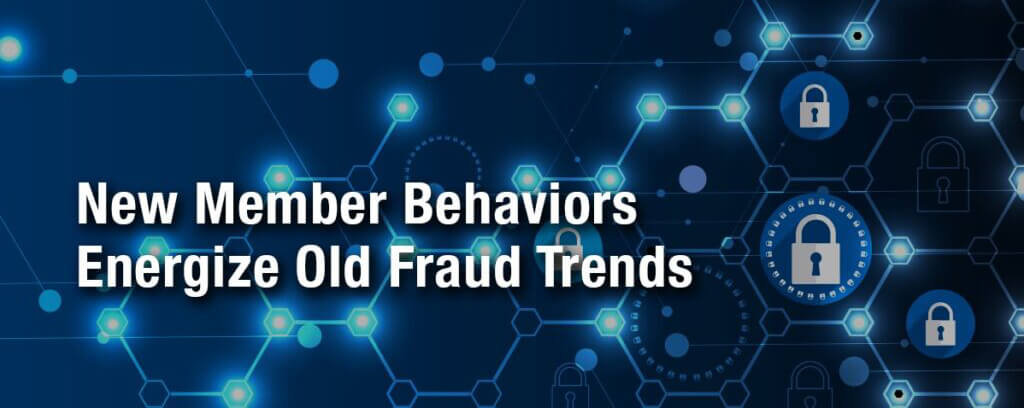
Fraud Monitoring and Detection Analytics Proactively Protect Credit Union Members
Credit unions confront a new reality that is now shaped by changing member behaviors that are motivated by a national health and economic crisis. Thousands of non-essential brick-and-mortar shopping sites are closed for now. Credit union branches are either closed altogether or available only during limited hours. Members now opt for online and mobile channels to shop and manage their financial lives. Credit unions learn from what their member data tell them. They proactively respond with strategies and tactics to better know their members and strengthen their relationships.
Curiously, at least one law of the physical world has a parallel in the digital one. That is, for every action, there is an equal and opposite reaction. Just as credit unions modify their service models to adapt to changes in member behaviors, the criminally minded are stepping up their sinister efforts to steal consumers’ identities, compromise accounts, and breach merchants’ online systems and databases. These malevolent activities demand a heightened level of vigilance and deployment of data-driven fraud-fighting countermeasures.
Here are two prevalent and rising fraud trends with suggestions on what credit unions can and should do to mitigate their impact.
Identity Theft Targets the Vulnerable
When human anxiety, insecurity, and emotion run high, fraudsters see an opportunity and work overtime to seize the moment. Members subject to a daily flood of overwhelming and sometimes conflicting news about the health of the economy and, by extension, the future of their financial well-being, represent attractive targets for identity theft and account takeover. No analytics platform can protect a worried member against falling for phishing and other emotionally based schemes to grab their sensitive and valuable information. Instead, that is the role of ongoing education to inform the member that such tactics do exist and how to avoid harm from them.
A world-class analytics platform can spot the anomalies in a member’s account activity that raises the red flags about potential fraud. Detecting fraud helps credit unions limit their risk exposure and lower write-offs and insurance claims.
Ideal Credit Union was one credit union that used the insights from their Trellance M360 analytics platform to quickly detect fraud occurring on their members’ credit and debit cards. The data revealed abnormal spending patterns and pointed to a common merchant source, a popular casual dining chain. Working with local authorities in specific geographic areas identified through analytics, they ultimately exposed a fraud ring that targeted the chain and its technology systems. The credit union promptly notified affected members, blocked their cards, and selectively reissued new cards.
In many cases, members first learn of an account compromise from their primary financial services provider, not from the compromised merchant.

Expect More Aggressive Data Breaches
With so many members now using online channels, fraudsters focus on digital merchants to reap their fortunes. Online credit card use is increasing as consumers preserve their liquidity; hackers and spoofers are watching spending trends as well.
Some merchants are quick to announce a data breach to their systems and data. Others not so much. Often, a breach and the resultant fraud occurs before a merchant or data warehouse is even aware of the unauthorized break-in. An analytics platform aggregates and normalizes a credit union’s member data from multiple source systems into a central single repository. Credit unions can use their analytics tools to identify spending patterns, compare them against historical member behavior, and proactively protect members through timely communications and non-stop account monitoring.
For example, a data breach of the system used by a popular national chain impacted millions of consumers. The chain did publish the affected merchant locations, the timeframe of the exposure, and the data stolen. That specific information, together with data furnished by the global card brands, helped inform a credit union’s M360 analytics platform. A rapid scan of members’ card spending behavior identified potential victims and enabled the credit union to notify members and selectively reissue credit and debit cards. Mass reissues are expensive and unnecessary in the era of analytics.
Analytics is an investment, not an expense. Analytics gives credit union members the priceless commodity of peace of mind and comfort.
What better time than now to serve and protect your most valuable business asset.
Trellance analytics solutions help credit unions of all sizes use their data to protect members from fraud. Learn more about the role of analytics in fraud monitoring, detection, and prevention by downloading the Trellance Product Portfolio pdf.









